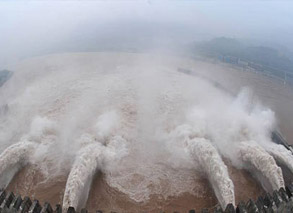What would Paris look like without so many Expo legacies?
2010-04-15 09:00 BJTSpecial Report: Shanghai World Expo 2010 |
As the seven-time host city of the World Expo, Paris owes much of its beauty and attraction to the grand events. Today, let's check out what a wealth of heritage has been left behind over the years by the global event.
As the landmark and symbol of Paris, the Eiffel Tower is now visited by some 7-million people from around the world every year. It costs 13 Euros to climb the tower for a bird's-eye view of Paris, making the tower a powerful engine to drive local tourism.
 |
| Scenery of Paris |
The construction of the 1000-feet-tall iron tower originated from the 1889 Paris World Expo. The year also marked the 100th anniversary of the Great French Revolution, so the city authorities aimed to create an architectural masterpiece that could represent the technological achievements of the 19th century.
More than 700 designs were submitted to Expo organizers. Finally the now iconic design by renowned architect Alexander Gustave Eiffel's won the bid.
It took about a year and a half to finish the mount, and a little more than eight months to install the iron tower. It was totally completed in March, 1889.
But the Eiffel Tower is not alone in commemorating the city's connection with the World Expo. Grand Palais and Petit Palais, as well as the Pont Alexandre III were constructed for the 1900 World Expo. And the 1937 World Expo left the city with Palais de Chaillot. These constructions still stand today as the city's prominent architectural feats.
From 1855 to 1937, Paris hosted seven events of the World Expo over a span of eighty years. When wandering around the city, one may feel as if they were visiting the Expositions in different periods.
One might ask: what would this "most romantic city of the world" look like without so many Expo legacies?
Editor: Liu Fang | Source: CCTV.com

 Mail
Mail Share
Share Print
Print


 Video
Video









 2009 China Central Television. All Rights Reserved
2009 China Central Television. All Rights Reserved